Yes, I’ve had, and I adore Vietnamese Iced Coffee. It is ironic for me to talk about a coffee recipe that I love when I am not an avid coffee drinker at all.
Coffee was an occasional breakfast drink for me. It would only be diluted in water and condensed milk.
Jump to:
I remember my mom made this drink for my siblings and me when we were kids. I didn’t taste the strong coffee flavor in it at all. It was just sweet, coffee-flavored milky water.
Once our coffee drink was ready, we dipped our baguette pieces into it before we ate them. We would savor the bitter scent of the French coffee and the sweetness of the condensed milk. This early morning experience was always a treat.
Watch the video
Strangely enough, I wasn’t able to develop a love for the bitterness of coffee, which is why I did not become fond of drinking it as I grew up.
Yet now, as I walk by a coffee shop, I enjoy inhaling the tempting aroma.
If I know I have to drink coffee to keep awake, I make my coffee sweet and creamy, so I don’t have to taste the bitterness.
You can check one of my favorite Thai Iced Tea recipes too.
Vietnamese Coffee
Coffee has conquered the world. Asian varieties have reached the U.S. without any issue. One of the most famous coffee-based drinks from Asia is the one from Vietnam—Café Sua Da or Vietnamese Iced Milk Coffee.
Since this coffee is getting more popular in the United States by the minute, I thought it would be fitting to perform research about it, make the coffee, and then create a recipe from a neutral perspective.
Of course, the sweet condensed milk in this coffee makes me want to try it every time.
You need to know first that the Vietnamese are the wizards of coffee. To understand this further, we must start by talking about the coffee beans.
Ca Phe - the balance of sweet and bitter in the Vietnamese coffee culture.
Arabica coffee is well known to coffee lovers, casual coffee drinkers, and coffee experts. Just seeing the large coffee section at the local grocery store is enough to prove this statement.
Arabica composes 70% to 85% of all the coffee cultivated globally. This is because Arabica coffee beans have more flavor, brought about by the high content of sugars in them.
Robusta coffee fills up the remaining percentage of the world’s coffee. This coffee is beneficial because the plant produces more beans than Arabica and is easier to grow.
The beans also create a more delicious “crema” and have more caffeine in them. Even with all these “plus points”, Robusta is still not widely utilized.
The taste of Robusta coffee is the primary reason. Its bitterness is similar to burnt rubber.
Only around 25% of the total coffee in stores is Robusta. It is often mixed with Arabica to enhance the flavor.
Vietnam grows about half of the world’s Robusta. Even if the country is known to be the 2nd to Brazil as the largest coffee producer in the world, 95% of their coffee is Robusta.
Vietnam may have a lot of coffee but most of it is bitter.
Bittersweet Perfection
It’s always the balance of sweet and bitter in the Vietnamese coffee culture.
Almost all traditional coffee recipes in Vietnam always have that sweetness factor.
You should expect to get either sweetened condensed milk, sugar, or custard in your traditional Vietnamese coffee.
Just the thought of the sweetening agents in your coffee makes you dread having to sip a sticky and sweet drink.
This might hold for Arabica coffee, but for the robust bitter Robusta coffee (Ca Phe Sua Da), the sweet components help create the ultimate balance that is quite challenging to replicate.
The Vietnamese certainly know what they’re doing with their abundant Robusta beans. Even if flavor challenges presented themselves, they were able to fix them.
As a result, they’ve created a unique coffee flavor that’s popular in every corner of the world.
Where to Find Vietnamese Coffee
Trung Nguyen is a household name in Asian homes abroad. Their signature deep-roasted coffee has flavor hints of spices, vanilla, and cocoa.
Just visit Amazon for the whole bean variety or Asian markets near you for the ground kind.
Don’t worry if your area doesn’t have an Asian market. Most known grocery stores have pre-ground Café du Monde on their shelves.
Surprisingly, though it’s not Vietnamese coffee, Café du Monde is a staple in Vietnamese-American households.
The elevated Robusta, chickory, and the dark roast give them that all familiar bitter kick.
For this recipe, you can choose whatever brand of coffee you want, provided it has the following:
- Robusta-blend
- Robusta
- French Roast or dark roast
- Medium-coarse ground
The Sweetness
Sweetness is the second most crucial element in Vietnamese coffee. Sweetened condensed milk is its usual source.
According to the country’s locals and historians, this thick, milky, sticky ingredient became the country’s staple sweetener after the arrival of the French during the 19th century.
The Vietnamese looked for a way to preserve milk for long periods because fresh milk wasn’t always available to them.
Longevity condensed milk is common in Asian markets and is used frequently in Vietnam. But for my recipe, you can use any brand of condensed milk available.
The Vietnamese Phin Coffee Brewer
Simplicity is what makes phin beautiful. It may be true that modern, high-tech coffee-makers take up space on countertops, the phin coffee brewer is small enough for it to stand on your palm.
This simple coffee contraption is made up of a filter press (holds and tamps the coffee grounds under the water, a small cup, and a small lip that also becomes the plate for the pin after the brewing.
- Traditionally, the phin covers the glass that has some condensed milk settling at the bottom.
- The underside of the phin has numerous small holes through which the dark coffee drips.
- Once the hot water is poured onto the coffee inside the phin, the slow brewing starts.
- The dark liquid drips into the glass and onto the condensed milk. This type of coffee time is not for those who are in a hurry.
It is one that has to be enjoyed with some conversation or good old-fashioned reading. The process is mesmerizing and refreshing at the same time.
Where to Buy the Vietnamese Phin
I bought my Coffee Phin from our local Asian market, but you can order it online thru Amazon.com as well.
Three components of a Phin:
1 Coffee Filter.
Where the hot water and coffee brew and filter through.
2 Inert Press.
A press that you screw on the top of the coffee. It gives pressure into the phin, making the hot water force the flavor out of the coffee.
The press then slows down the dripping of the coffee into the glass. The dripping slows down more as the press tightens.
3 Cap/Lid.
This stops the heat from escaping.
Two types of phins
Commonly carrying 4 to 6 ounces, a phin can be made of stainless steel or aluminum. The most known designs are:
• Gravity. Let gravity do all the work. The filter just uses the weight of the coffee grounds to extract the coffee.
• Screw. Here, the filter press compresses the coffee grounds to release the liquid coffee.
Both types are effective, but the screw phin enables you to control the drip rate of the coffee.
Controlling the phin brew rate
- Lift the filter press and in the chamber, add 1 to 2 tablespoons of ground coffee.
- Replace the filter press. If the coffee grounds are compacted well enough, the hot water won’t be able to pass through them that easily. The compaction makes the brewing rate slower, which results in a stronger beverage.
Note:
Do not compact the grounds too tightly. If this happens, the water won’t pass through the grounds at all. If you’re using a screw-type filter, be sure to loosen the press a bit to improve the airflow through the coffee grounds.
Variations of Vietnamese Coffee
1 Hot Vietnamese Coffee.
This is known in the north as ca phe nau (brown coffee: sweetened condensed milk). In the south, it’s called ca phe sua (milk coffee).
In other regions of the country, it is known as cà phê sữa nóng. Brewing rate slower, which results in a stronger beverage.
2 Vietnamese Iced Coffee.
Also called café sua da or ca phe sua da (iced milk coffee), this is essentially similar to the hot coffee recipe.
The only extra step is to pour the hot brew over ice. Then, you stir it well until you get a milky and bittersweet, iced coffee.
3 Vietnamese Iced Coffee Shake.
Like the iced coffee version, the brew is poured over ice placed inside a cocktail shaker.
You then shake the iced coffee for half a minute to a minute before you pour the ice-cold, frothy coffee over ice in a glass before enjoying.
You can also do this by pouring and passing the cold coffee between the two containers. Air is incorporated into the coffee, producing the needed froth. You should have a high level of coordination here.
To add more kick into the coffee, add in a shot of rum or Kahlua into the shaken iced coffee. Pour it into a martini glass and enjoy.
This is much like caffe shakerato of Italy, which has espresso and ice shaken together, then served in a martini glass.
Grab these ingredients
- 2 tablespoon Cafe du Monde (or Robusta coffee Trung Nguyen) coarsely ground
- 1 cup boiling water
- 2 tablespoon Condensed Milk
- 1 cup ice cubes
Step by step instructions
The Base Recipe (Hot Coffee):
Step 1
Boil 2 cups of water.
Step 2
Add 2 tablespoon Condensed milk in a heat-proof glass container.
Step 3
Remove the lids and the inner filter from the Phin. Add 2 tablespoon of coffee grounds to the press.
Step 4
Tap the side of the filter to evenly distribute the coffee grounds, then place the filter press until tight against the grounds. Note: Don't close it too tight.
Step 5
Gently pour a splash of hot water into the filter and allow the coffee grounds to "bloom" for 20-30 seconds.
Step 6
Fill the phin filter with hot water all the way. The coffee should slowly drip into the glass below. When brewing is complete, remove the filter and stir well. Serve immediately if enjoying hot.
for Vietnamese Iced Coffee:
Step 1
Follow the steps above, then slowly pour the mixture over a glass of ice. Stir and enjoy.
for Vietnamese Iced Coffee Shake:
Step 1
Complete the steps for hot coffee above. Pour the mixture in a tall glass or cocktail shaker with about 1 cup of ice. Shake until foamy. Serve over ice.
Notes
1.) You can purchase the Vietnamese Phin coffee filter at Amazon or at your local Asian market or you can use a Moka pot or an Espresso.
2.) Robusta beans are preferred for their bitterness that counterbalances the sweetness of the condensed milk.
Related Post :
Now you can skip the line at the coffee shop and enjoy Thai Iced Tea at home with this super-easy recipe that tastes like the authentic version of this beloved creamy and sweet Thai tea beverage!
I love pairing this Vietnamese Iced coffee with double-dipped French Toast. You can find the recipe by clicking the link or the image below.
Coffee in Vietnam is much more than brewing and sipping. How the Vietnamese corrected the signature Robusta bitterness through a clever degree of sweetness has been phenomenal.
The resilience and resourcefulness of the Vietnamese created the Vietnamese Iced Coffee, which placed the country’s coffee culture on the global map.
Full Recipe
Ca Phe Sua Da | Vietnamese Coffee (Recipe)
Pin RecipeEquipments:
- Vietnamese-style coffee filter phin or similar device for making strong coffee
Ingredients:
- 2 tablespoon Cafe du Monde (or Robusta coffee Trung Nguyen) coarsely ground
- 1 cup boiling water
- 2 tablespoon Condensed Milk
- 1 cup ice cubes
Garnish:
- frothed milk
Watch the Video:
Instructions:
The Base Recipe (Hot Coffee):
- Boil 2 cups of water.
- Add 2 tablespoon Condensed milk in a heat-proof glass container, like in the picture.
- Remove the lid and the inner filter from the Phin. Add 2 tablespoon of coffee grounds to the press.
- Tap the side of the filter to evenly distribute the coffee grounds.
- Pour a splash of hot water in the filter and allow the coffee grounds to "bloom" for 20-30 seconds.
- Then, place the filter press until a bit tight against the grounds (but don't make it too tight otherwise, it will make the drip slower.)
- Fill the phin filter with hot water all the way. The coffee should slowly drip into the glass below.
- When brewing is complete, remove the filter and stir well. Serve immediately if enjoying hot.
Vietnamese Iced Coffee:
- Follow the steps above, then slowly pour the mixture over a glass of ice. Stir and enjoy.
Shaken Vietnamese Iced Coffee:
- Complete the steps for hot coffee above. Pour the mixture in a tall glass or cocktail shaker with about 1 cup of ice. Shake until foamy. Serve over ice.
Notes:
Nutrition Information:
Please note that all nutrition information are just estimates. Values will vary among brands, so we encourage you to calculate these on your own for most accurate results.

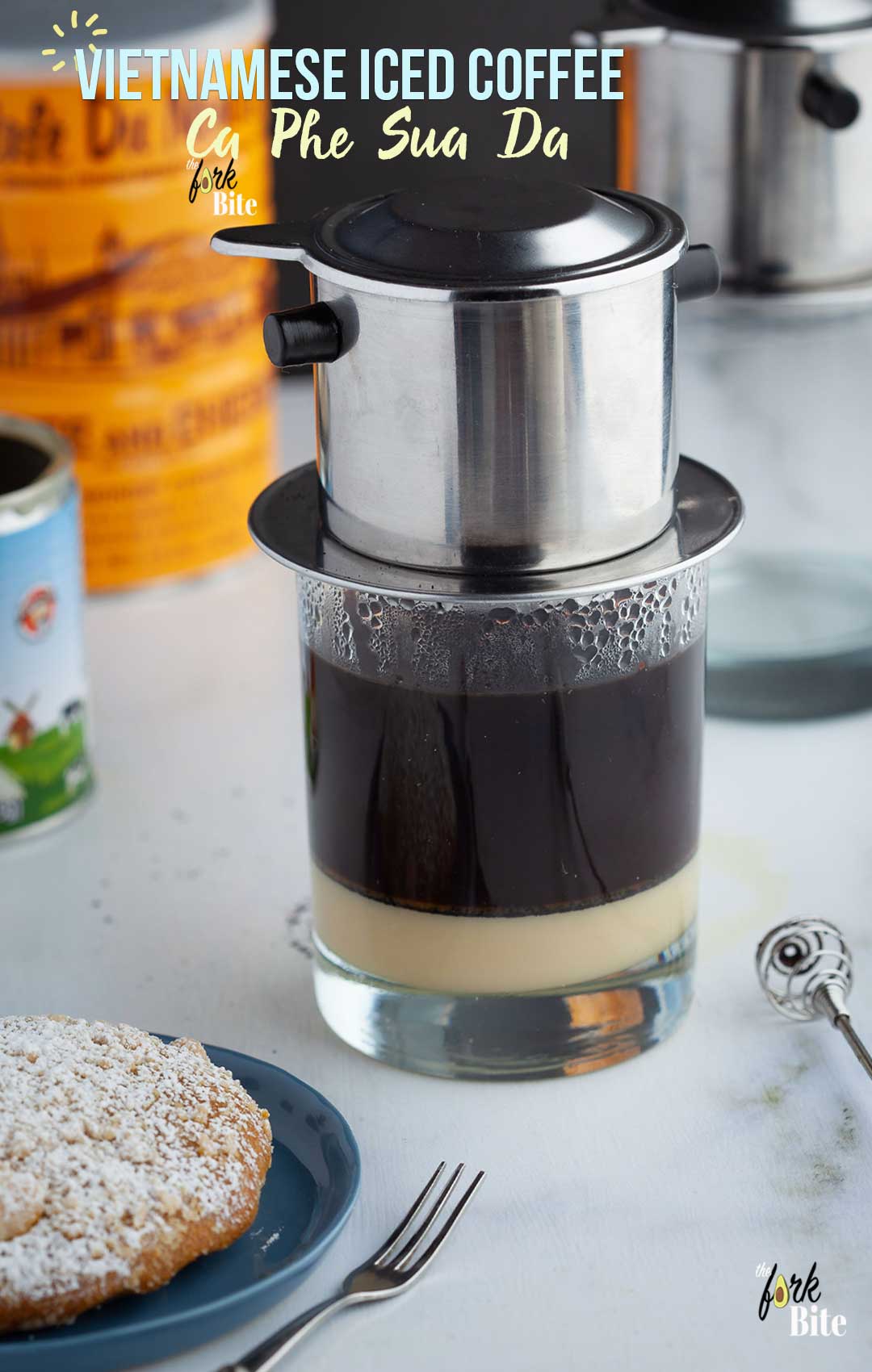
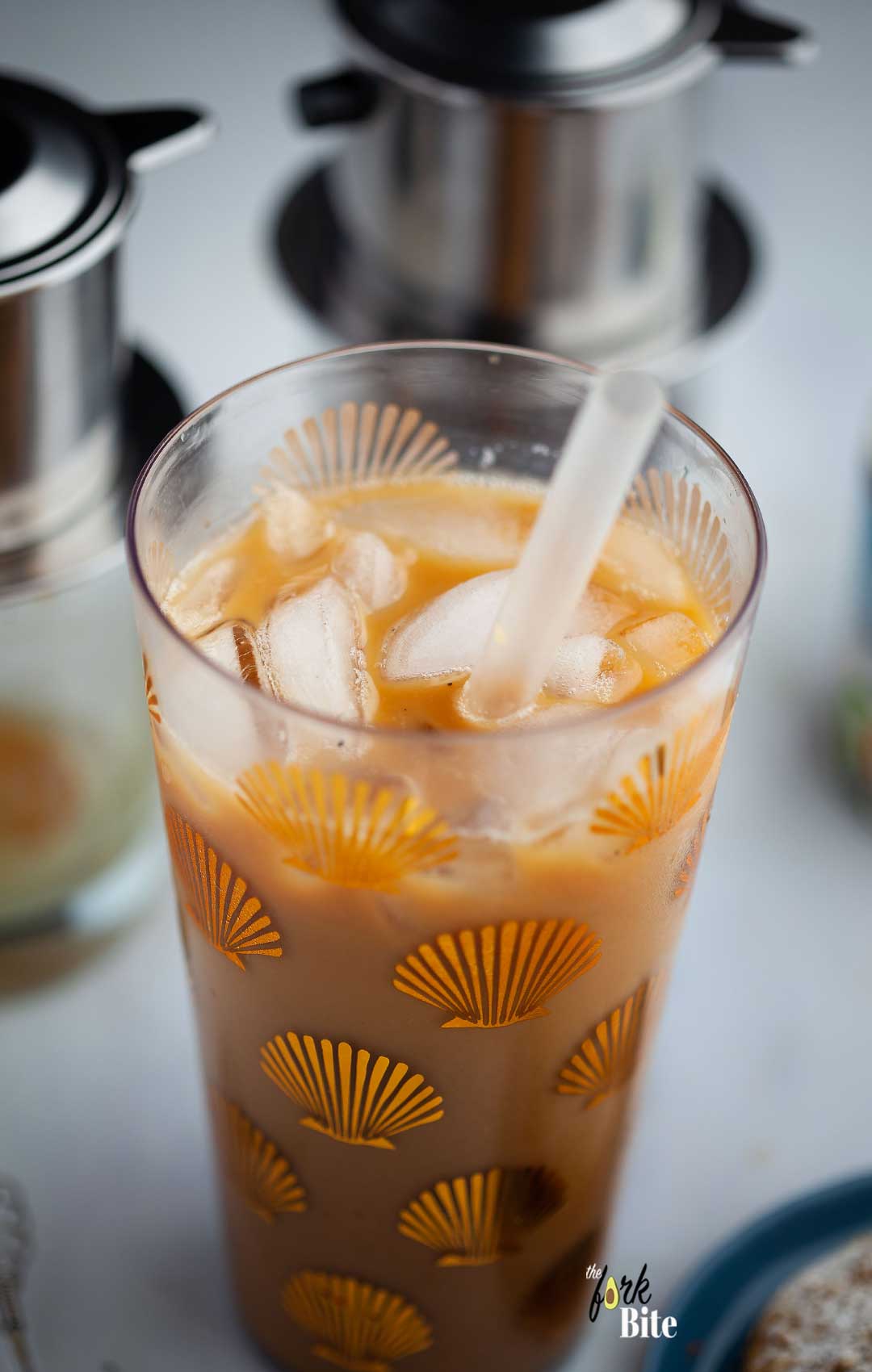
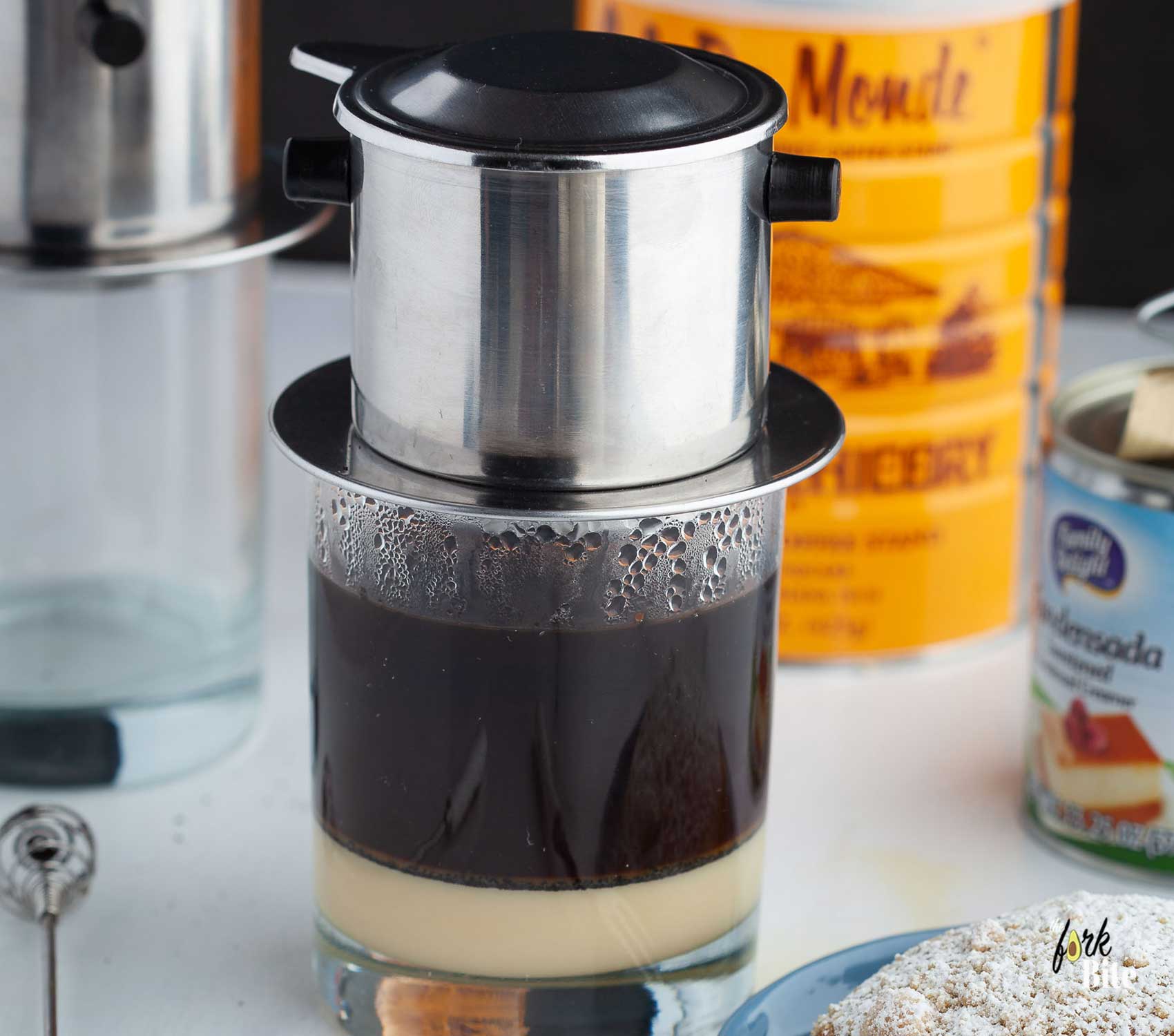
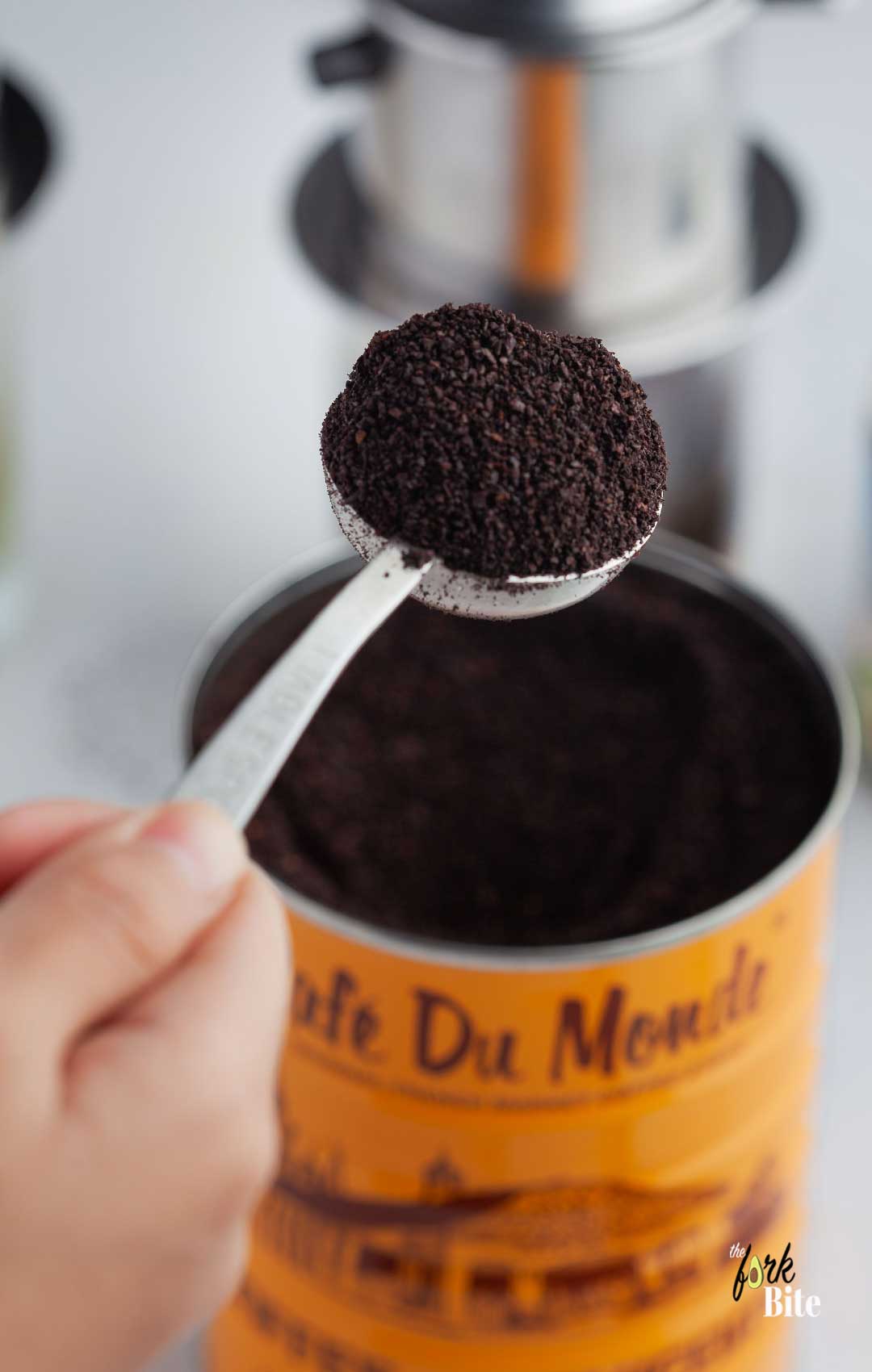
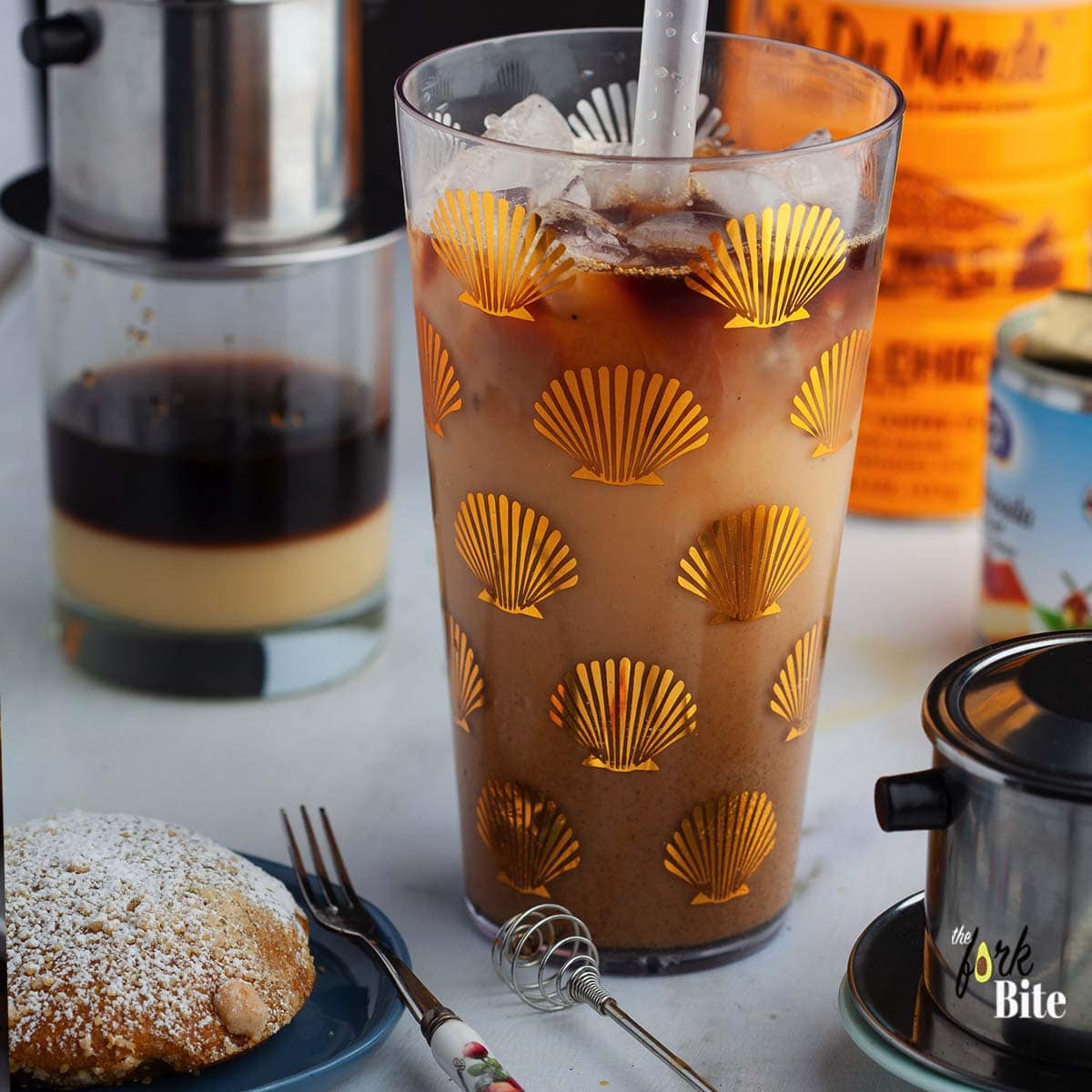
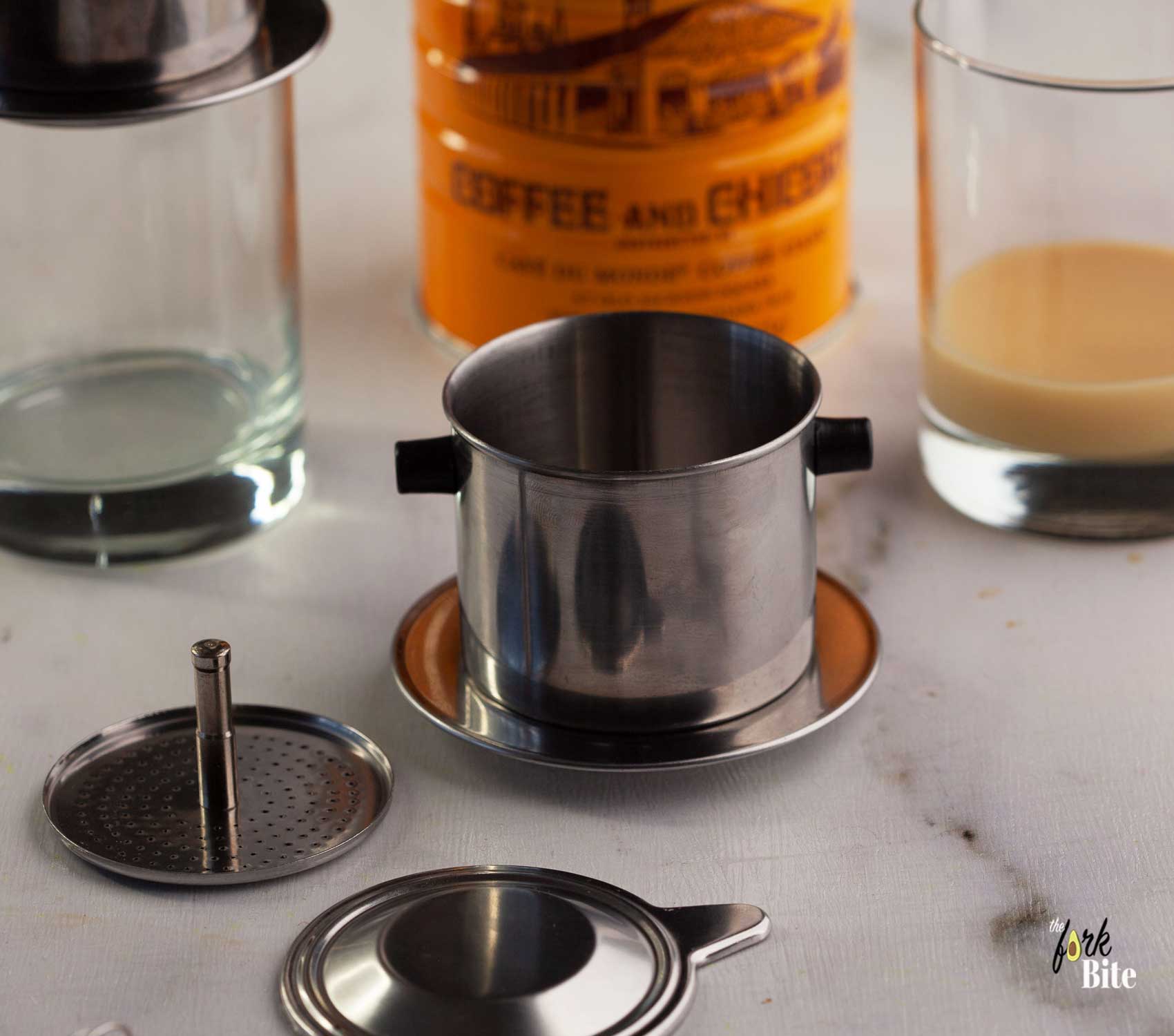
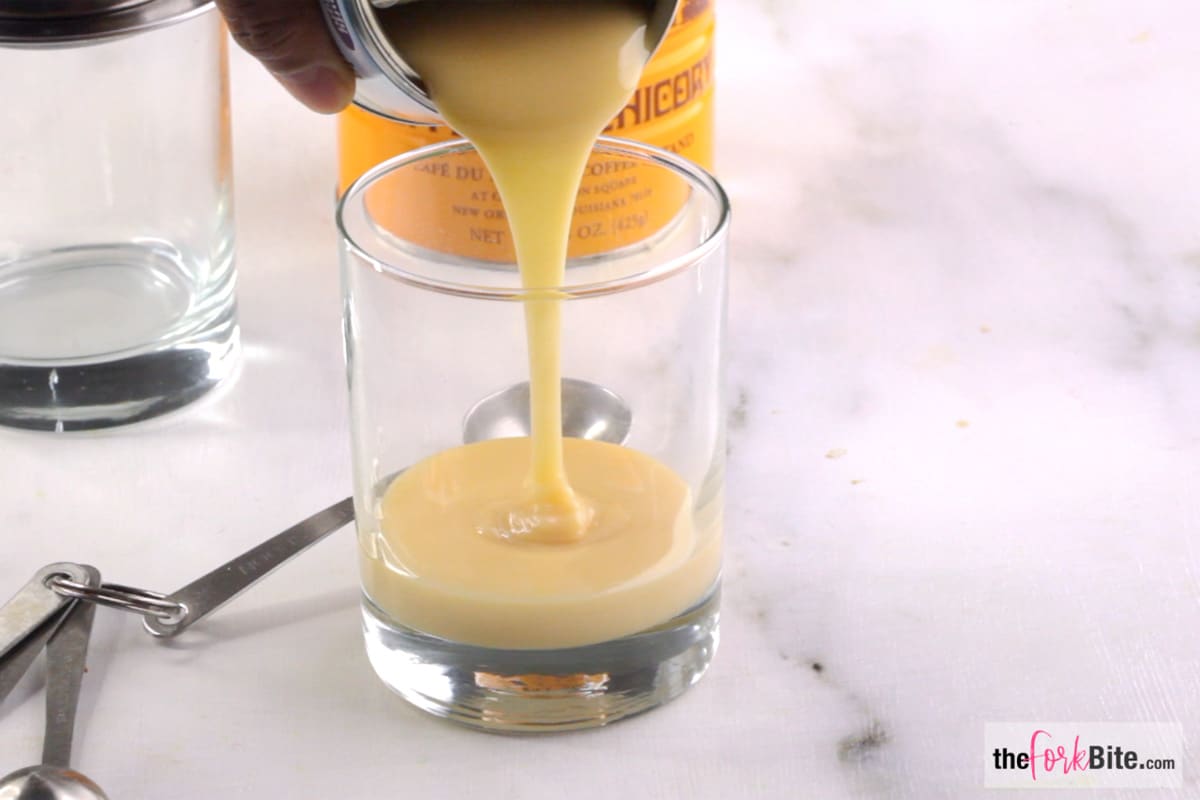
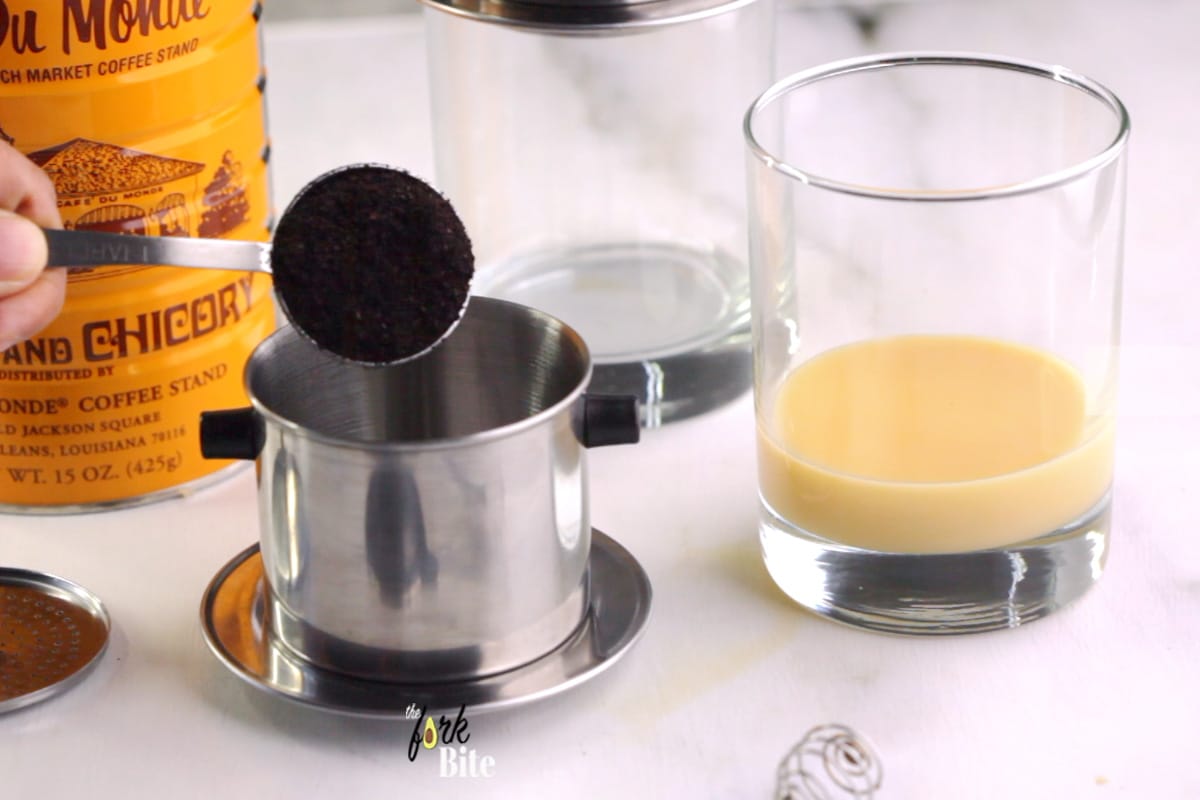
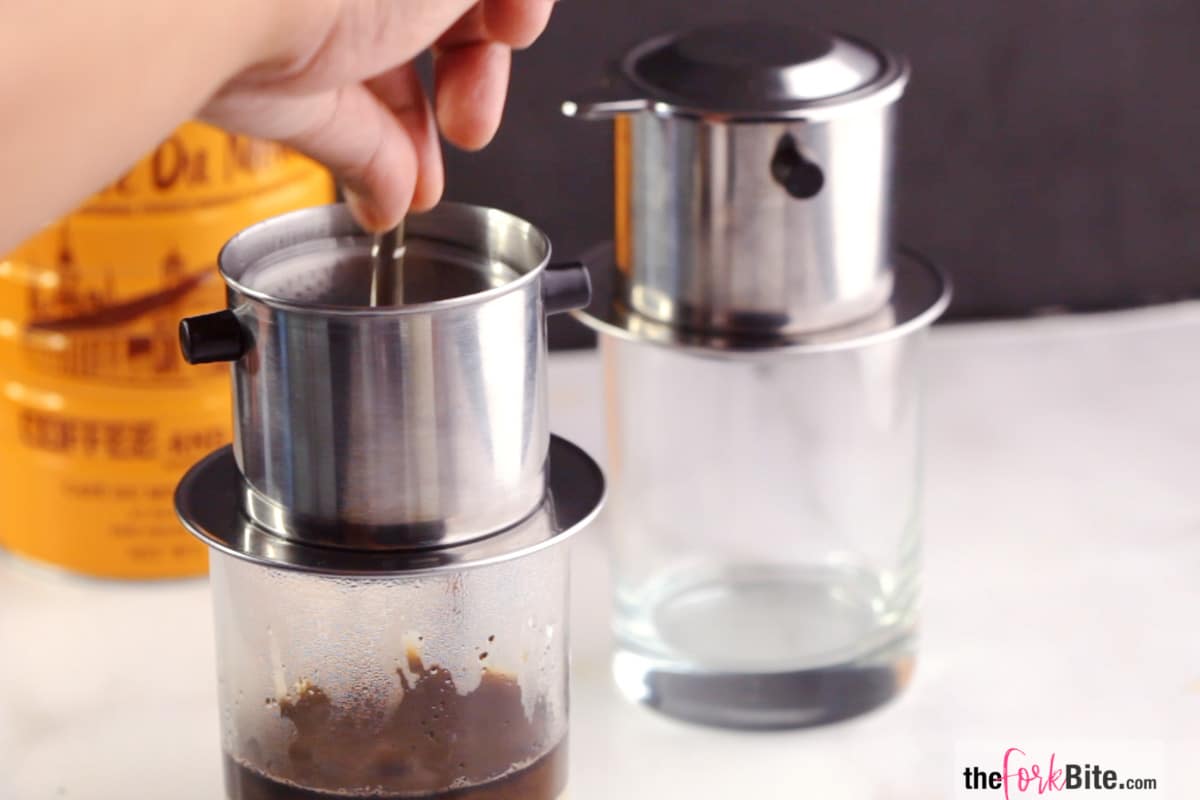
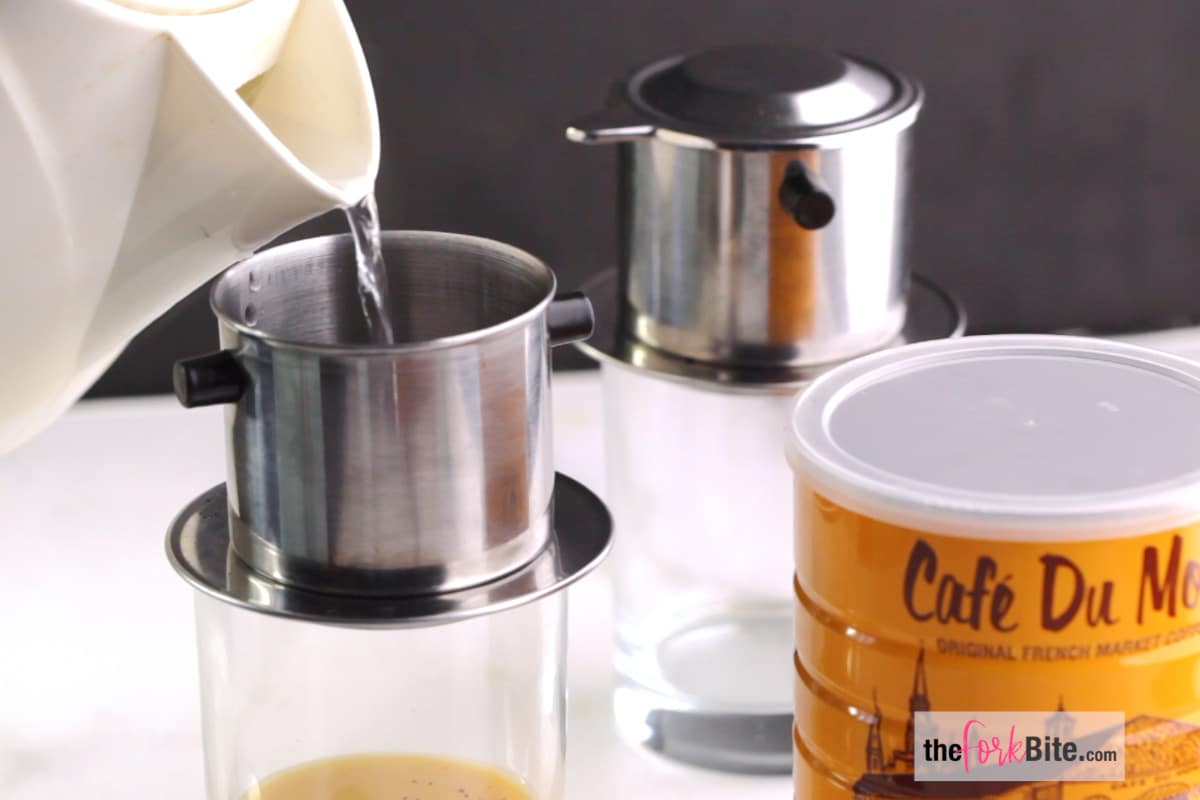
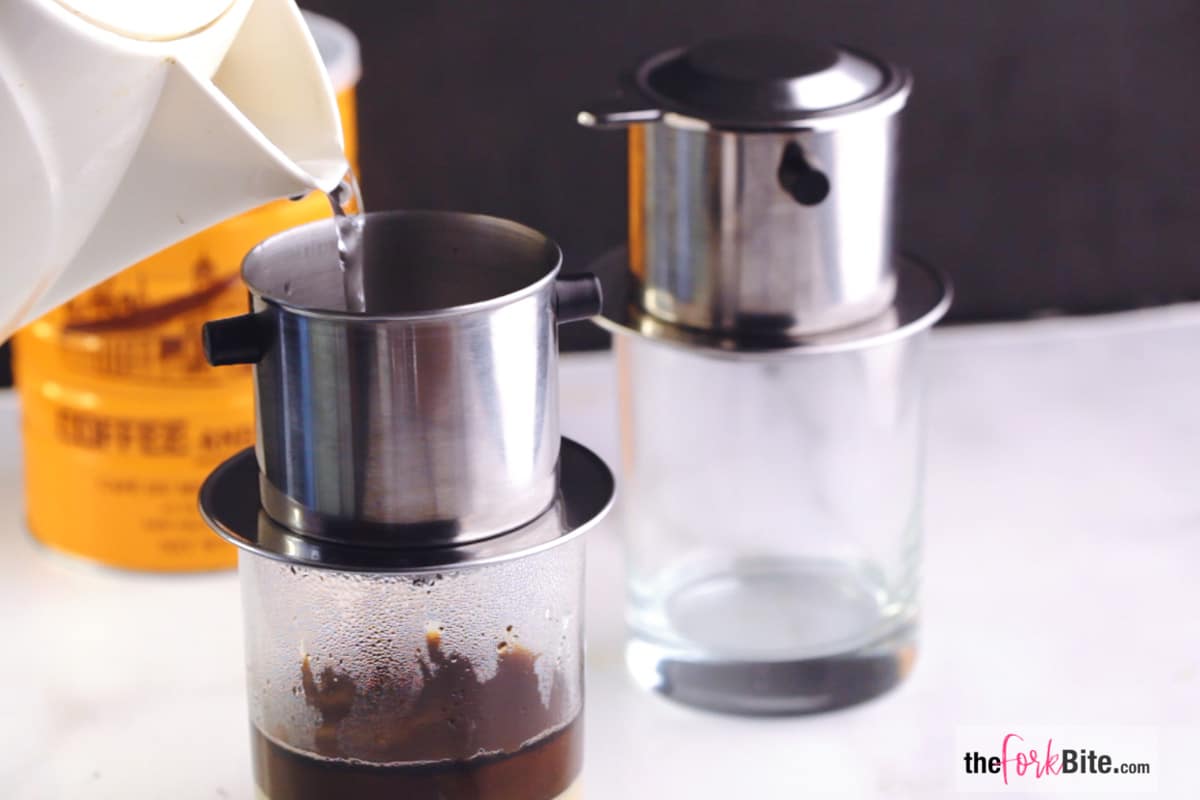
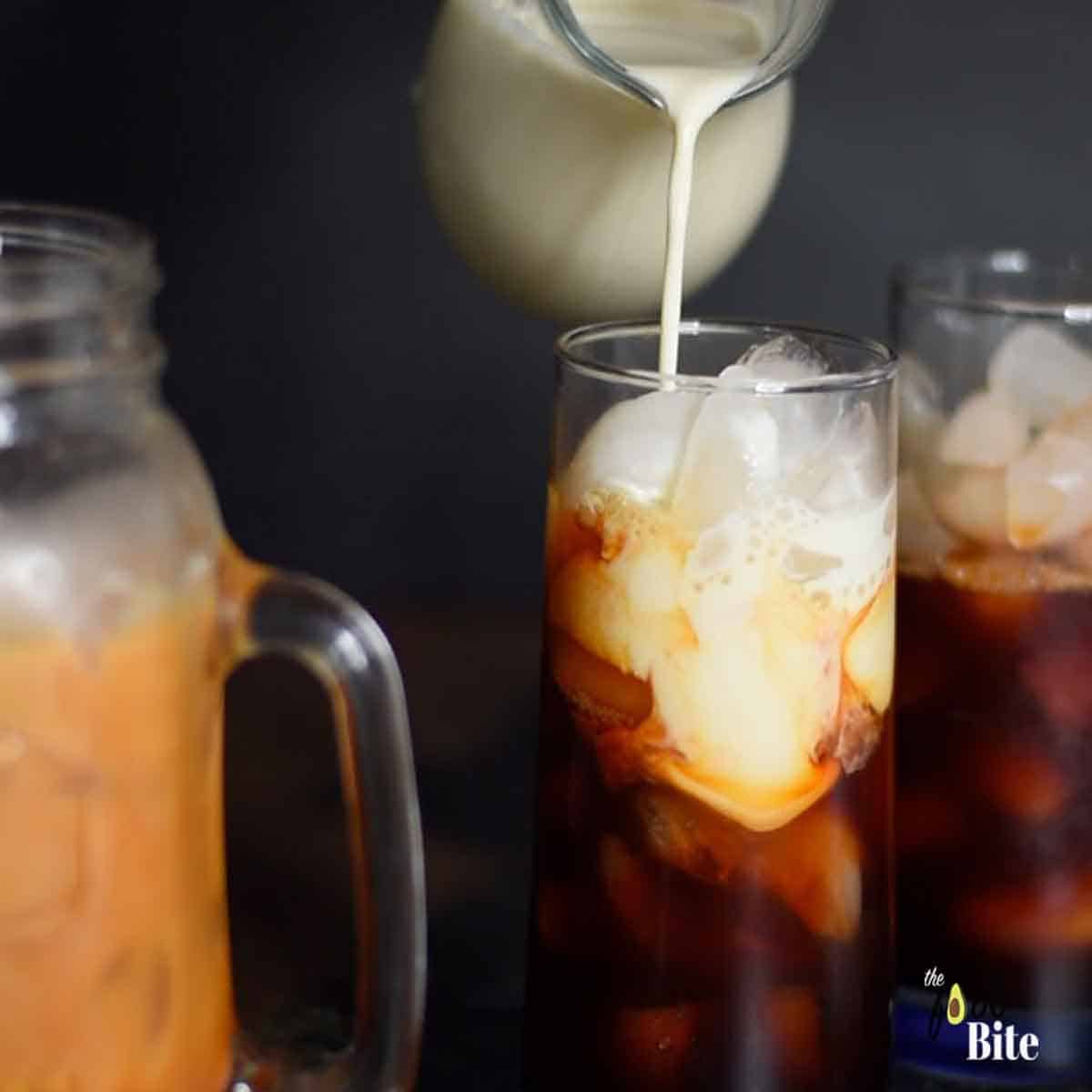
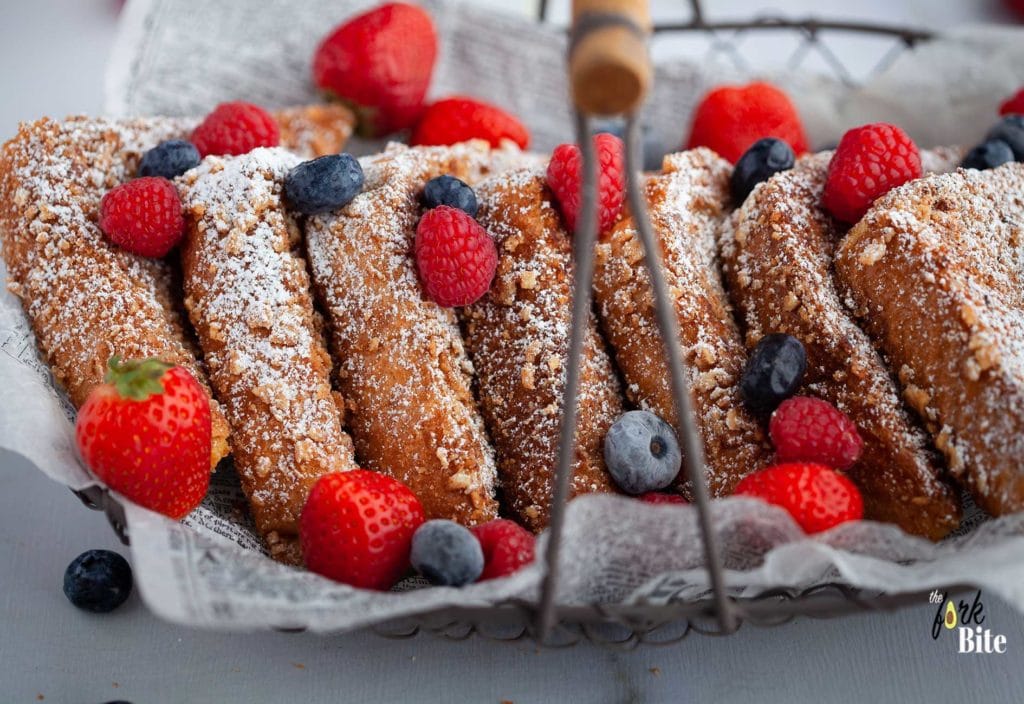
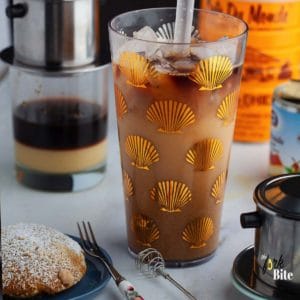
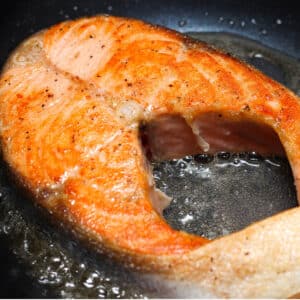
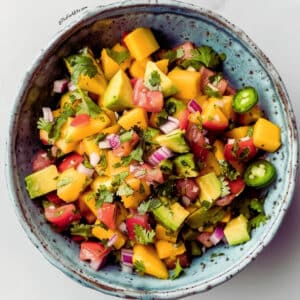
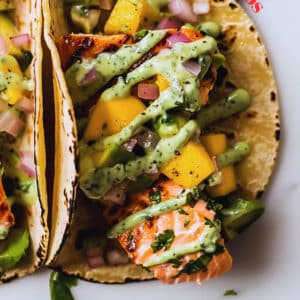
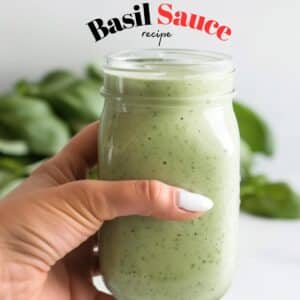
angelina says
Omg, Vietnamese coffee is my absolute favourite. I'm so happy I found this post. Its perfect for me
Surekha-dreamingloud says
I've always heard that Vietnamese coffee are the best..! Thanks for sharing this blog on how to make one. I will try this asap.
WanderlustBeautyDreams says
I've never had Vietnamese coffee before but now I want to try it out after reading this post! Thanks for sharing this.
Nigar RAHMAN says
It's really amazing to know about Vietnamese coffee!And it looked tasty to drink also.Thanks for sharing.
Anna says
I really enjoyed reading all the preparation details as I haven't tried a Vietnamese coffee myself so far! I'm an occasional coffee drinker, but love trying new tastes and flavors! The balance of sweet and bitter in the Vietnamese coffee sound delicious!
Khoingn | The Broad Life says
This is my every morning drink. It's very very good!
You should also try Bac Xiu, it's coffee with more condensed milk.
Lora Frost says
I am more of a hot coffee person. But, that coffee maker and the description of the iced coffee have me intrigued. Thanks for sharing. I may have to give it a try.
Lyanna Soria says
Ca Phe Sua Da is something I loved to order when I was a Vietnam. I absolutely love the taste of their iced coffee. Thanks for sharing this recipe, I'll definitely make this during my spare time.
Myrah Duque says
Coffee is the only addiction I have. I would like to try Vietnamese coffee!
emily says
I love Vietnamese drip coffee!! I was recently in Hannoi and I bought one of these vitetnamese coffee makers!
Melanie williams says
Oh wow this sound so lovely. I may have to give this a go when I have the time to do this xx
Subhashish Roy says
Although I prefer hot coffee mostly, during the summer months I love to also have iced tea or coffee. The Vietnamese iced coffee looks a great option and so easy to make.
Carrie | Clean Eating Kitchen says
This sounds so yummy! I love the contrast in sweet and bitter, going to try this really soon!
Emman Damian says
Ca Phe Sua Da sounds so yummy! I love Vietnamese coffee. So yummy!
Ntensibe Edgar Michael says
Hhhhmmmmm....how I wish I had met this recipe a few weeks ago when I was still a big fan of coffee. I would have tried this.
Amber Killmon says
I've never had Vietnamese coffee but this looks easy enough to try. I am a coffee lover after all.
Stacie says
Coffee is my jam every morning! I'd love to give this a try. It sounds like a delicious drink.
Heather says
I've never tried Vietnamese coffee, but I know that we would love it! We love trying coffee from all over the world.
Matt Taylor says
It looks like a great coffee drink! I don't drink coffee myself but I have friends that do. Will definitely share this with them. 🙂